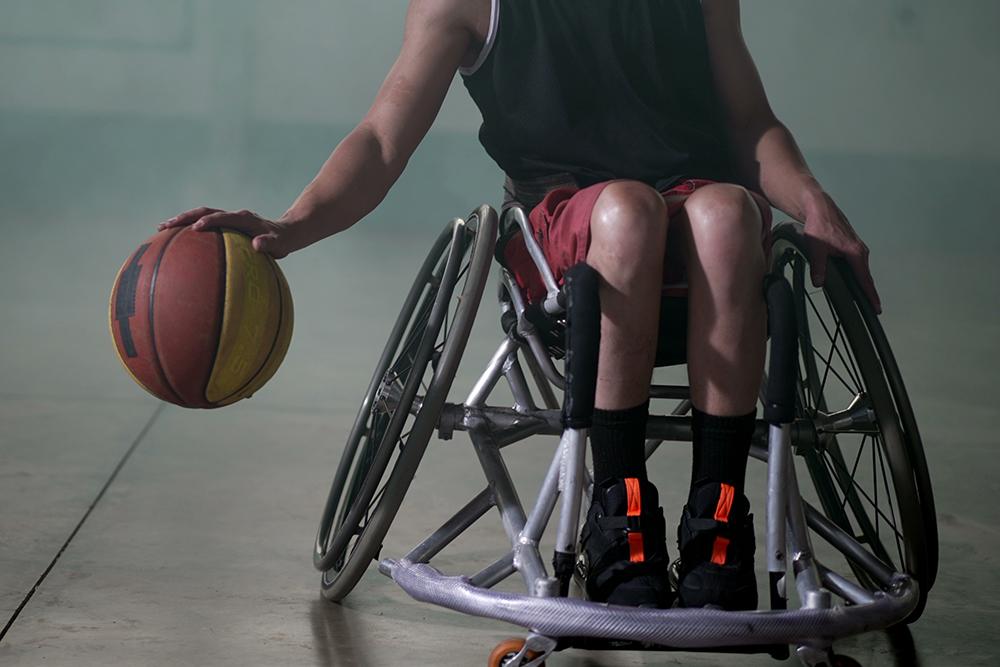 We know that sports are hugely beneficial to children and young adults, from both a physical and mental standpoint. But sometimes, the sport systems that are in place don’t promote the healthiest practices for all athletes—and that can be difficult for families in youth sports to navigate.
We know that sports are hugely beneficial to children and young adults, from both a physical and mental standpoint. But sometimes, the sport systems that are in place don’t promote the healthiest practices for all athletes—and that can be difficult for families in youth sports to navigate.
Tom Farrey is the founder and executive director of the Aspen Institute’s Sports & Society Program, including the Project Play initiative, which works to foster healthy children and communities through sports. Here, he joins the TrueSport community to explain the issues facing youth sport in the U.S. today, and how parents can best help foster a love of sport for their young athletes.
Farrey first notes that it’s important to understand that while youth sports programs in the U.S. can be problematic at times, participation in sport activities is incredibly important for a child’s well-being. “Sport can be a tool of physical and mental health. The research is clear that kids who are physically active are one-tenth as likely to be obese compared to inactive kids,” says Farrey. “They’re more likely to stay in school. They’re more likely to go to college. In general, they engage in less risky behaviors.”
In 2008, Farrey, then an investigative reporter, released the book “Game On: The All-American Race to Make Champions of Our Children,” which highlighted some of the issues facing youth sport in the U.S. Soon after, he began working with the Aspen Institute to address some of the problems that he saw in youth sport and athlete development.
“The landscape of youth sport has gotten both better and worse since 2008,” he says. “I think there’s a greater understanding now about what ‘good’ looks like in a youth sport experience. We have a greater appreciation and understanding for the fact that kids should sample a variety of sports, hold off on specializing in any one until the teenager years, and I think there’s a wider variety of sports options compared to 20 years ago. And we’re more aware now of some of the gaps in the landscape in terms of access to sport.”
However, some things have not improved. “The youth sports industrial complex has grown since then,” Farrey adds. “There’s more of an emphasis now on treating youth sports as a tool of ‘sports tourism,’ so more travel teams for early ages have been formed to bring competitions to different places. Youth sport should be about the social benefits and physical benefits, with less emphasis on this all-in, year-round competition schedule that happens with travel teams.”
“The challenge is that in the U.S., we haven’t really set up our youth sport systems in a way that ensures that every kid who wants to play sports has an opportunity to do so.”
Parents also face a lot of pressure to do ‘the right thing’ for their young athletes, without a solid understanding of what’s actually healthy for their developing kids.
Here, Farrey has a few tips for how to ensure that your athlete is the happiest and healthiest version of themselves in sport:
1. Ask what your child wants from sport
“In general, what you want to do is start with having a conversation with your child about what sport they want to play, why they want to play, what success looks like for them, and what they’re hoping to get out of the experience,” says Farrey. Often, the answer may surprise you.
2. Put your sport interests aside
“Often, parents sign up their kids for whatever sports they think are going to be interesting or that they played themselves,” says Farrey. “They don’t actually have a conversation with the child to see what they are interested in. In that conversation with your child, you’ll realize how they’re wired, and you’re more likely to be able to design an experience that is going to meet their needs.”
For example, some children thrive in team sport environments like soccer or basketball, while others may prefer solo-oriented sports, like swimming or gymnastics. There isn’t a wrong answer: Lean into your child’s interests and accept that they may change over time. Remember, the discovery period is important for their healthy development and long-term interest in sport.
3. Examine your own motives
 “What the parent wants to get out of youth sport is less important than what the child wants to get out of it, but it is important to understand and question your own goals,” Farrey says. He recommends asking yourself questions like: “As a parent, what am I hoping that my child gets out of their sport? Is it something tangible like a scholarship? Is it a certain level of success that I did or did not achieve?” Ideally, he says, your goal for your child should be based on life-skill acquisition, like your athlete building resilience and practicing leadership.
“What the parent wants to get out of youth sport is less important than what the child wants to get out of it, but it is important to understand and question your own goals,” Farrey says. He recommends asking yourself questions like: “As a parent, what am I hoping that my child gets out of their sport? Is it something tangible like a scholarship? Is it a certain level of success that I did or did not achieve?” Ideally, he says, your goal for your child should be based on life-skill acquisition, like your athlete building resilience and practicing leadership.
“Most parents simply want sport to build character and healthy habits for a child that they can bring into adulthood,” he says. “But too often, parents don’t take the time to think through this, and they don’t identify what they want their child to experience, so they end up going with whatever is presented to them. This can unintentionally lead to outside pressures on your athlete.”
4. Check in with the local sport organization
Ask the program leaders if coaches are trained in key competencies in working with youth. This step is particularly important if your athlete is leaving the school sport system to play for club teams, or to do a sport like gymnastics, dance, or swimming that isn’t offered within the school district, which more often has a set of minimum standards. “Parents need to understand how unregulated some of these programs can be,” says Farrey.
“It’s important to ask your local sport organization a set of questions to ensure your athlete’s safety, as well as to ensure that your athlete will get the experience that they’re looking for. For example, ask if the coaches are trained and certified in basic health and safety, as well as current concussion protocols, if they’ve received Safe Sport training, and if they’ve had background checks. There’s often not a lot of regulation or rules for coaches, which means that unfortunately, a lot of the due diligence falls to the parents. You owe it to your youth athlete to be a good advocate for their safety.”
5. Don’t take advocacy to a negative place
While you do need to ensure that your youth athlete is training and competing in a safe program that has their best interests in mind, this doesn’t mean barking at the coach or referee during a competition, says Farrey. “We need advocacy at the front end, like making sure the youth coaches are qualified and know what they’re doing before you join a team. We don’t need parents who are screaming in the stands and second-guessing every decision a coach makes.”
6. Let kids experience play
“One of the most important components of youth sport is the concept of play,” says Farrey. “Play is what children are born to do. Play develops all sorts of skills: It teaches trial and error, resilience, problem solving, creativity, and teamwork. Play is important in order for anyone to live a healthy, productive life and become a useful citizen in our society.”
And sport is a natural space for children and young adults to experience play. “Play manifests itself in sports,” says Farrey. “When you see children doing creative things with a ball, trying crazy shots, struggling in the backyard trying to do a new routine or test out a new skill, that’s a form of play.”
7. Help your athlete fall in love with the sport—not feel like it’s a job
“We study the leading sports systems around the world, those that produce the highest percentage of kids who play sports, and those that develop the most Olympians and other elite athletes. We’ve seen that the most successful systems focus on play and joy in the sport,” says Farrey. “If you fall in love with the sport, you want to go out and keep playing. That’s where you develop the creativity and the motivation to stick with it, because it has captured your imagination. That’s the kind of culture we want to bring to youth sports in the U.S. Focus on joy at the core, not just winning.”
___________________________
Takeaway
Parents can help support healthy athletes by helping them develop a playful, joyous approach to sport. Allow your child to explore different sports and ask what they want to get from sport. Additionally, be aware of your own biases and visions of success for your youth athlete, and don’t allow your hopes and dreams to overshadow what your athlete actually wants. Focusing on play and enjoyment will lead to healthier athletes and people who ultimately compete better and longer in their chosen sport while also developing important life skills.



